C1.6 - Human Evolution
Early Primate Ancestors
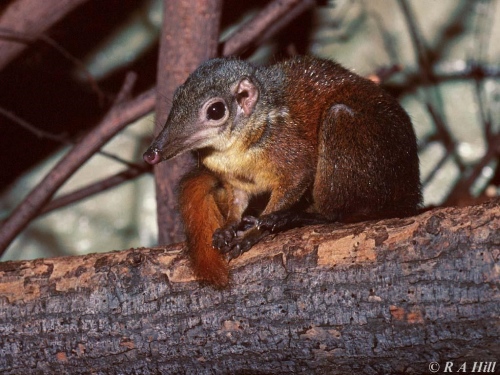
- 60 mya: Ancestral mammals develops flattened molars, grasping hands and feet, forward-facing eyes
- primate: mammals w/ grasping hands and feet w/ opposable first digits
- Arboreal (tree) adaptations
- Plant diet
- Developed shoulder and hand movements
- Binocular vision
Primate Phylogeny
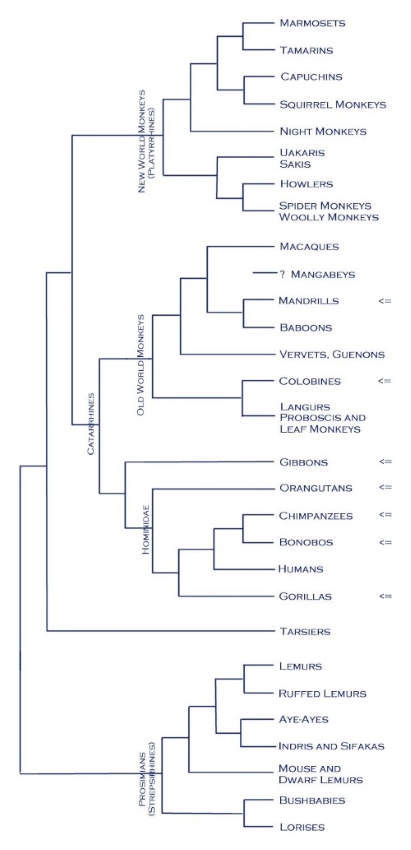
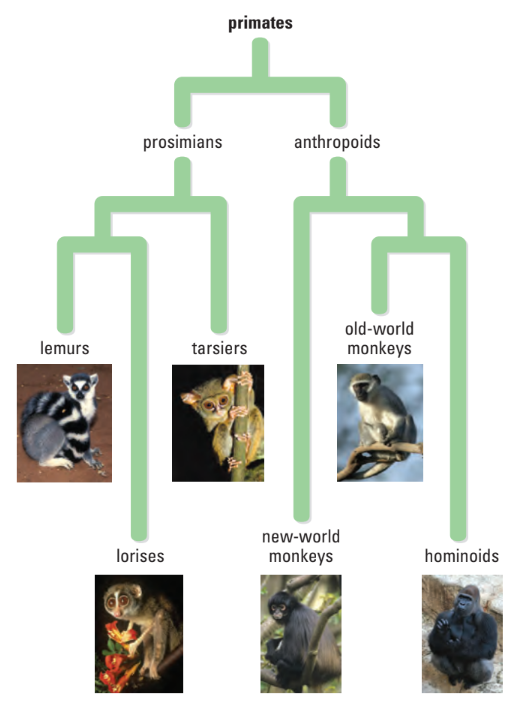
- phylogeny: study of periodic events in biological life cycles
- Early primates gave rise to 2 distinct lines: prosimians and anthropoids
- prosimians: most primitive living species of primates, retains early characteristics of primates
- species like lemurs and lorises (lush babies)
- usually dog-sized or smaller
- anthropoids: primate species with evolved traits
- like monkeys, apes, and humans
- Anthropoids branch into old and new world monkeys
- Hominoids lack tails, have relatively large brains, use simple tools
Emergence of the Hominidae (upright man)
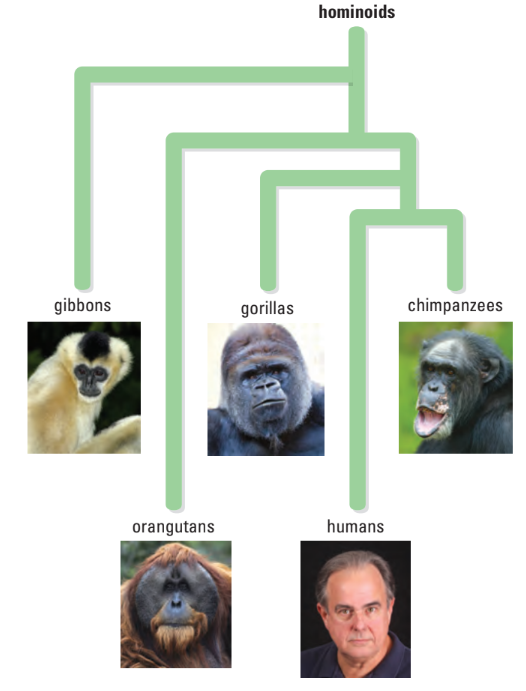
- Bonobo chimpanzee (Pan paniscus) is the closest living relative to humans
- Hominoids appear approx. 4 mya
- hominid: humans and all their ancestral species that arose after split from ancestral chimpanzees
- Advantage gained by bipedalism (most likely sexual)
- bipedalism: ability to walk on 2 feet
- Greater efficiency, freeing of hands, vision over tall grass
- Ardipethicus ramidus: oldest known bipedal species
- 4.6 mya
- 1st discovered in 1992
- 15 years to fully understand place in human evolution
- oldest fossils found in Ethiopia
Australopithecus afarensis
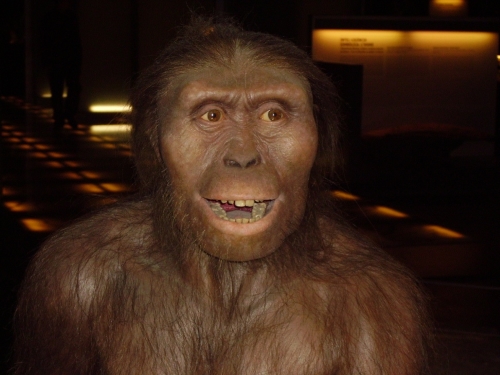
- Early biped
- Lived 3.5 mya
- 1 m tall, ape like features
- Lucy most famous representative of species
- Gave rise to two hominid lineages
Homo habilis
- First of Homo genus
- Lived 2.2 - 1.6 mya
- Larger brains, smaller jaws and teeth, and longer legs than A. afarensis
- Brain size approx. 1/2 of modern humans’
- 1st ancestor to use stone tools
Homo erectus and Homo eargaster
- Lived 1.9 - 1.4 mya
- Body proportions similar to modern humans
- Used stone tools and fire
- Spread into Europe and Asia
- H. eargaster sometimes characterized as subspecies of H. erectus
- Evolved into H. heidelbergensis, H. neandrethalensis, and H. sapiens
Homo neandrethalensis
- Lived 350,000 - 30,000 ya
- Stocky species, pronounced brow ridges
- Large brains
- Fashioned tools, practiced inhumanation, complex speech
- Extinction, absorption, or evolution?
Homo sapiens
- First appeared in Africa 130,000 ya
- Monogenesis hypothesis: all humans arose from a common ancestor
- Large brains, complex speech, inventive and ingenius
- Dexterous: Skillful in the use of hands
- Long childhood dependency
- Produced art (Venus of Willendorf)
Out of Africa Theory
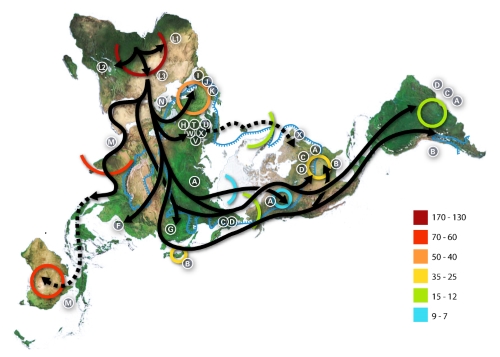
- Modern humans leave Africa 65,000 ya
- Displace other Homo species
- Mitochondrial and Y chromosome tracking
- Founder effect visible in populations outside of Africa
- Most recent common ancestor of humans
- Mitochondrial Eve 200,000 ya
- Y-Chromosomal Adam 60,000 ya
- Interesting Facts
- If no son, y-chromosomal lineage dies out
- Mitochondrial Eve mated w/ diff. heidelbergensis
- All of your mitochondria from mother
Human Ancestor Skull Chart
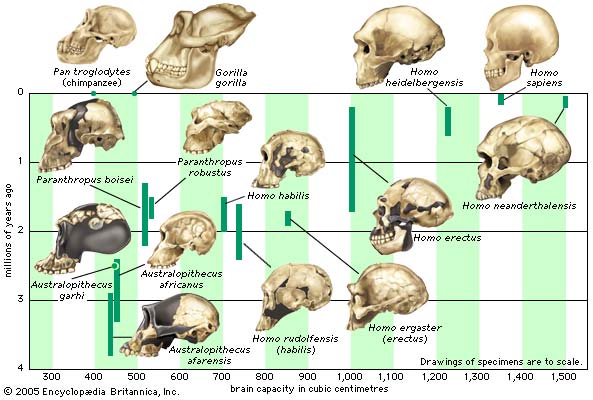
Sources






